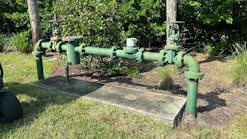At some point, all communities face possible devastation from rising flood waters. And on the front line of the flood response effort are civil engineers inspecting and monitoring flood control systems in order to protect community lives and property. But…at what risk?
Join Ryan Hunsicker and David Totman for a FREE webinar exploring how the County of San Bernardino developed and implemented an effective flood response plan using a Geographic Information System (GIS). Learn how you can use GIS to effectively plan, execute, mitigate, and review your flood control efforts year round.
This webinar will be presented live on Thursday, July 28th 11 a.m. PDT / 2 p.m. EDT.
Following Hunsicker’s discussion, Totman will share how Esri is helping organizations manage flood planning, response, recovery, and mitigation. Partnering with San Bernardino, Esri is creating the next generation of flood management solutions.In this webinar, we’ll start with a look at Geographic Information Systems (GIS) within flood control management, including: the key components, applications, capabilities, and benefits. We’ll then discuss in-depth how the Country of San Bernardino Department of Public Works modernized their manual flood control performance reporting (e.g., channels and basins during severe weather) by converting to a first-generation GIS platform using out of the box technology…and how you can, too. Within this discussion, we’ll outline the GIS best practices to better manage field reports and data and the performance of your flood control facilities. We’ll take a look at the near real-time reporting capabilities, time-stamped, storm reports, photograph updates, and field staff location information, and how these can be leveraged to reduce response time and mitigate damage/risk. Additionally, Hunsicker will review how you can use the GIS database spatial information to perform after-action reviews of the flooding event, disaster fund recovery, and justify/obtain post-environment clearance requirements.
Whether your flood management system is paper-based or using modern telemetry, this webinar will lay out best practices to improve the effectiveness and sustainability of your flood management response time.
Learning Objectives
Attendees can expect the discussion and education of the following learning objectives:
- Learn how to transition your flood control systems from paper to Web GIS
- Gain GIS real-world best practices, and how you apply these to better manage your flood control system performance
- Understand how to use GIS to post flood event response, and gather documentation to recover disaster-related funds and justify post-environmental clearance requirements
- Get a preview of next generation flood management solutions, and learn how you can use web GIS technology to modernize your existing systems
Date: Thursday, July 28th
Ryan Hunsicker, GIS Manager, Survey Division Chief
San Bernardino Department of Public Works
David Totman, Industry Manager
Esri Global Water Practice
Esri’s ArcGIS Platform allows you to collect, manage, and analyze spatial information and share it in an easy-to-understand map available on any device, anywhere, anytime.
To learn more about Solutions for Flood, visit: http://www.esri.com/industries/water-resources/offers
Notes
* Presentations are scheduled for approximately 1–1.5 hours with a 15–20 minute question and answer session to follow. Presentation may exceed scheduled time.







